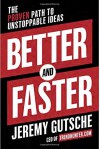
Blah, Blah, Blah, Book Blog
I'm not a fan of summarizing, so get that from the publisher, and then we can talk. Literary Fiction, Historical Fiction, Young Adult, Middle Grade, Picture Books. I'll read it all, and, if I like it, I'll make you want to read it too!


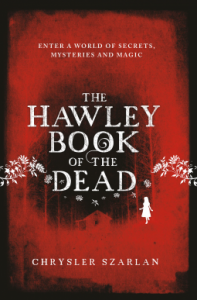
This is a great book to add to your summer reading list, if it isn’t already on it. For me, it had all of the elements of a powerful, suspenseful read. I am a complete sucker for a New England witch story, and, while this was more about magic than witches, it fit the bill otherwise. A story of a family through generations, a killer on the loose, old loves reappearing after long absences, and magic, all kinds of magic, really, what’s not to love? To be honest, I was surprised this was a debut novel; the story was polished and the plot was complicated and well-developed.
As a huge fan of The Night Circus as well as The Physick Book of Deliverance Dane, I was pleased that this book lived up to the comparison. I loved even the many minor characters, and the entire concept of these generations of women named “Revelation”. This is another one of those books where you will benefit from not reading the summary on amazon; I wouldn't want to spoil any part of it. Buy it now, clear your calendar (and some room on the couch), put your feet up, and dive right in. You will not be disappointed.

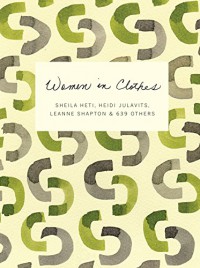
I am not really sure what to make of this book. I was proud of myself for getting through it – all 528 pages of it, when I wasn’t sure at times that I would finish. It was a truly mixed bag for me, part brilliant commentary, but equal parts tremendous slog. I read it first on my kindle, as an ARC that was not formatted for the kindle, which, unfortunately took me a while to figure out – wow, those were photos!... and columns of type! I am guessing they fixed that in time for publication. Finally switched to the adobe digital editions version and like magic it was formatted, albeit more like a magazine than a book. Which led me to wonder who this was for, and what it really was. I chose this title originally because Heidi Julavits was attached to it, and I enjoyed her book, The Vanishers. I did not really choose it because it was about fashion, per se, but more because it was about how clothes make people feel and why they wear certain things, and that topic interests me. I liked the survey the authors created, though it seemed unnecessarily long and unwieldy, and I didn’t like the fact that they listed questions, but captioned it as an “ever-evolving” list – were they still changing it after they printed the book?
This book was a rambling rant of a book – a coffee table book that I read on a tablet, which just seems odd. It took me long to read it, mostly because the book was so chopped up into bite-size stories that I never felt guilty putting it down. I was a little put off by the use of many of the survey participants’ names, written with a sort of insider’s attitude, i.e. nobody was identified as anything more than an artist, author, etc., and I spent a lot of time not feeling like a hipster, and resentful that I had to look these people up if I wanted to know who was giving the information and why I should listen to them. After I looked up several of the article authors or interviewees, I just stopped. If their story was terrific, maybe I would look them up, maybe not. But the irony was, at least for me, the only person I found myself looking for was Heidi Julavits. Her stories, sprinkled throughout the book, were far better than anything else – the mitten story was a highlight for me, with the perfect combination of neuroses and hilarity. Her writing shines throughout this book, and she comes across unaffected and honest, which, unfortunately, is not true of many others who offer their opinions in these pages.
For a while, I liked the pages that showed people’s collections of things, but after a while I started to question whether these people really did have eight very similar raincoats, or 20 tote bags; but later, I just appreciated the break from a lot of self-absorbed talk about precious objects.
The parts I did enjoy spoke to the meaning behind the clothes, the memories created while wearing them, or the significance of certain purchases, who made them and why. There is a lot here to capture the imagination, a lot of beautiful and also equally sad stories, but for me, it was just a little more than I needed.


I have to agree with some of what has been said about this book online – that, after the fun of The Rosie Project, this was a little more serious than I expected or maybe even wanted. I read these two back to back, so the shine was still on the first when I began the second. The lightheartedness of the “project” seems a little lost on this one, and I was sad to see it go.
I don’t want to spoil anything, but there were threads of this story that simply did not make sense for me. The obvious one would be, if Rosie thought that Don could not be a partner for the long haul of marriage and children, why did she bother to marry him in the first place? There are major plot points that hinge on this, and Rosie’s actions seemed out of character as compared with her depiction in the first book. It’s almost as if someone told Simsion that the people in his first book were just too nice, so he needed to rough them up a bit.
Still, for me, Don is a perfect character. He puts everything out there, and I feel like we are unquestionably inside his head. There are new characters introduced in this book, and for the most part they are a welcome addition, serving as foils to Don’s mostly unintended humor. I was disappointed with Rosie in this one; I felt as if Simsion made her mean-spirited, and sometimes, just plain mean. As a romantic comedy, this delivered a lot more sadness and tension than I wanted. The relationship that seemed awkward and new and wonderful in the first book seemed to disintegrate into something stilted and irritating in the second, without any real defined cause. Little things contributed to this feeling, like when Don and Rosie referred to each other as their “partner”, as opposed to husband or wife. But yes, you know it’s going to be a happy ending – I can ‘t be spoiling anything there, that’s why we read books like this, isn’t it? But still, the only reason anything is a surprise in the end is that it doesn’t really all add up.
Don’t get me wrong; I do not regret reading this book. In fact, I could read the random thoughts of Don Tillman all day. When he reflects on the difference he can make in the world by his work alone, it is a moving, heartfelt, thing of beauty. I could have read the book just for that moment and it would have been enough.


I probably shouldn’t have read this novel as I was listening to Nancy Horan’s novel, Under the Wide and Starry Sky, but in truth, they were a good pair to read together. They covered a similar period of time, were set mainly in Europe, and showed the great disparity in the lives of a successful male and female writer of the time.
This story of Aurore Dupin, better known as George Sand, is a scandalous tale of a woman who in many ways lived the life of her male counterparts; dressing as a man to gain access to venues where women were not allowed. According to Berg, the great love of Sand’s life was a woman; but as this did not seem fated for her, she managed to overcome her sadness with a slew of other famous lovers. It seemed as though every handsome man was a potential lover to Sand, and she was always on the brink of her next great love affair. If it was not based on a true story, I probably wouldn’t have believed it — she leaves her husband, and falls for the lawyer, her lover seems on his deathbed, she sleeps with the doctor in the next room. She was one of those women who always think that men are checking her out, and, apparently, they were!
Berg’s story held the most interest for me in the difficult early years of Sand at her family home at Nohant, in France. In her writing life, Berg describes Sand’s process of combining drama-filled days with long nights spent on her work; a determined woman intent on earning her own way. She was a fierce critic of her contemporaries, and she didn’t suffer fools or lazy writers, especially if she was sleeping with them. I should admit at this point that I have not read a book by Sand, but honestly, despite being well-written and thoughtful, this book covered all I really ever want to know about her, so I’m good.

This is why my current reads have been piling up - I've been binge-reading business books for my next REVIEW. It makes me feel better that I learn a little something in between all of the lovely fiction. In any case, some interesting thoughts in these regarding the future of different businesses, along with our ever-changing, aging workforce. I do like some of the methods they are using to keep people employed, but I sure hope I don't need to work when I'm 80. I have a lot of hobbies to keep me busy, like reading, for example.


This is actually the book I read - not the one pictured on my shelf, despite the fact that I used the ISBN number. For some reason, the search on Booklikes (their claim to fame) is not very good, and I am constantly copying and pasting ISBN numbers from Goodreads into Booklikes in order to find a book I found on Goodreads simply by searching the title... Any clues on why this happens? Anyway, that's not at all where I meant to be going with this. This is what happens when I wing it, and don't write into Word before I post.
So anyway, my daughter waited in line for 7 hours last weekend to meet her hero, Connor Franta. She made a shirt for him - the word Frantastic was involved - and happily got up at 6am to spend a good chunk of her morning in the Barnes and Noble parking lot. By the end of the day, she had this book, autographed, and a huge smile you couldn't wipe off her face. She also read the book that night, and passed it on to me shortly after. While I try to maintain a proper parental boundary between safeguarding her and letting her have her teen obsessions; when she gives me something to read, I need to read it. So I put aside the pile of books I was reading, and gave this one my attention. Happily, it was an interesting read, by an inspiring guy who seems to take his position of role-model-to-the-masses very seriously. He is a twenty-something who finds himself in an unexpected position — a shy guy loved by at least 4 million people who subscribe to his YouTube channel.
Despite his enormous popularity, he seems to have a sense of humor as well as a sense of his responsibility to his audience. So yes, if my daughter is going to spend her computer time watching Connor Franta's posts on the internet, I support it. Really, can it be any worse than the uncountable hours I spent staring at Vinny Barbarino on Welcome Back, Kotter? Neither of us will be able to get that time back, but that can't be the worst of our problems, right?


I didn't really plan on writing a full-blown review, but this really was a little gem of a book. It is so many things at once, it’s really very difficult to put it in a specific niche — it’s a book about loss and grieving, a book about aging and the problems of youth, a book about sex (yes, that too, but possibly one of the most hilariously written scenes ever), but most of all, it expresses a kind of unfiltered joy through all of it’s odd and sometimes disturbing characters. I have to say that I highly recommend the audio book. This is a book that takes place in Australia, so for some reason it just feels better to me hearing it read with an accent – the voice in my head is unable to make some of those wonderful sounds. In this reading, even the words I am not familiar with sound comforting.
It is not a perfect book, but who cares! This is a lovely debut novel, and you will be sad to see this often bizarre Bonnie and Clyde road-trip of a book come to its surprisingly tame but nonetheless satisfying end.


Leaving the Pink House
By Ladette Randolph
This book reminded me of Love, Loss and What I Wore, in its ability to evoke not only place, but a mood, a period of time, and a complete cast of characters through the memory of inanimate objects. Unlike clothing, a house does have the ability to almost become a character; and in many books I’ve read the setting becomes more important than the people I am supposed to come to understand.
There are many houses in this book, all places Ladette Randolph has called home at some point in her life. But this book is primarily about the pink house, and the farmhouse she is renovating that will cause her to leave it. I say cause with purpose, because it seemed to me that despite all she suggests, she did not leave her beloved pink house willingly. I read this book with a couple of different mindsets. The child in me, as well as the DIY/HGTV-watcher, wanted to see some photos of these houses and the renovations. Maybe they are in the printed copy, I read a kindle ARC from NetGalley. I also read it as a home-owner who has been through two separate periods of renovation, so yes, I felt her pain. What disappointed me was the lack of enthusiasm she seemed to have toward the house they were renovating. There was a lot of talk about it being her husband’s dream, his project, etc. I cannot imagine tackling a job like this dilapidated house without a unified front – i.e. both spouses 100% vested in the final results.
Because of this, there are some cringe-worthy moments where I felt there was just a little too much disclosure. I don’t mean this in any racy kind of way, but I think that if it were me, I wouldn’t call my husband out on mistakes he made if I still want him to be my husband after the book is in print. There are moments, where Randolph seems to be rethinking her entire relationship, that I found awkward and uncomfortable, and an unnecessary part of the story. Sure, I get it, projects like this cause stress even in a great relationship, but at times this did not even feel like a good relationship, or one I particularly cared about.
Aside from that, I have to say that this couple had some extremely nice and generous family and friends, who put a lot of time, effort, and, in many cases, professional skills into the house. When they implied these were given in exchange for a nice meal, etc., I found it annoying later when they bragged about how they stayed on budget. Hope your friends don’t mind reading that either, but maybe that’s just me. I did find the writing compelling, and the stories of the author’s childhood in Nebraska interesting.


I realize I am a little late to the table on this one, but bear with me if you have not read these books. I stopped asking for samplers in the recent past, because I tend to read an excerpt, like the book, and order it. Then, time passes and my early onset Alzheimers (thank you Lisa Genova for teaching me that term, by the way) kicks in, and I think to myself, Wait, did I already read this? Not good.
So… full disclosure, I am pretty sure I picked this sampler from NetGalley because I loved the cover. Seriously, and it was a sampler, not even the real book. But to be fair, that flatiron building is awesome, and I am a sucker for an inviting illustration. This would be a terrific example of when judging a book by its cover actually paid off, because this quirky collection of non-fiction really delivered, with stories about PTSD, couture fashion, the making of a clinical psychologist and a dictator, and finally, a man who bought 420 pounds of beef to give his family a better life. Honestly, each one was better than the one before. I am not sure if I will read all the books, but I would recommend at the very least that you get the sampler and check them out for yourself. I found them all appealing, and certainly very different from one another. All were well written, piqued my interest in a variety of topics, and were oddly compelling.
At the top of my list, surprisingly to me, was Jared Stone’s The Year of the Cow. But maybe that’s just because I’m a Cowie, who knows.
Here is the list of books included in the collection:
Irritable Hearts: A PTSD Love Story, by Mac McClelland
The Battle of Versailles: The Night American Fashion Stumbled into the Spotlight and Made History, by Robin Givhan
A Kim Jong-Il Production: The Extraordinary True Story of a Kidnapped Filmmaker, His Star Actress, and a Young Dictator’s Rise to Power, by Paul Fischer
The Skeleton Cupboard: The Making of a Clinical Psychologist, by Tanya Byron
Year of the Cow: How 420 Pounds of Beef Built a Better Life for One American Family, by Jared Stone

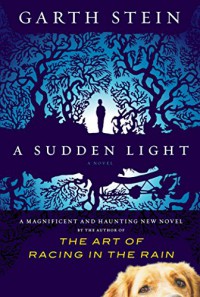
When I read The Art Racing in the Rain, I have to admit I was a little ambivalent going in. I mean, come on, a dog narrates it, right? But of course, like millions of others, I was hooked pretty much from the beginning. Garth Stein begins this book in the same way, hooking me with the promise of a crumbling old mansion, a lost family fortune, tense marital and sibling relations, and, most compellingly, a few old ghosts.
Again I was a little taken aback by the narrator — 14-year old Trevor Riddell — thinking he was too young to tell this story. But again, I fell right into the lilting, easy dialogue of these characters, with all of their charms and their dysfunction. The story has the lyricism and the pacing of an old-fashioned ghost story, with only a few interruptions from the modern world. Of course there is a present day story here, and there are real world problems that are addressed as the family decides their future. But while they are in this house, the rest of the world seems to exist more as a concept than as a reality, which creates a sort of timeless quality for the story.
I still stand by my initial thought that Trevor was too young a narrator, but Stein compensated for this by making him wise beyond his years. If the story had not been so well told, I may have argued about this (narrative cheating), especially since his naiveté in some areas did not jibe with his knowledge in others. There was also some very VC Andrews-like creepiness to the story that I could have done without, especially since it was laced with a Berenstain bears-ish, “Sister Serena, Brother Jones” that only made it worse. Maybe this is common for the place (Puget Sound), but around here it’s just a tad weird. But I am a grown-up, as much as I hate to admit it, so I try to look beyond these tiny details. All in all, it was a moving, lushly-told tale. I would also highly recommend the audio book, which is narrated beautifully by Seth Numrich. I can’t wait to see who Stein's next narrator is — I vote for a shoe, or a Parakeet — Run with it, Garth!


I received this book from NetGalley on my kindle, but when I missed the publication date I decided to listen to it instead. I am a fan of audiobooks, especially when I can listen to them while I work. (ok, not serious work, more like mindless grunt work.) I was especially glad to listen to this one when I realized there were some names I never would have pronounced correctly. And no, I don’t mean Nora, I can handle that one, thanks. But there are a few tricky others, and besides, I do like being read to. However, when my library copy expired and I couldn’t get it back again quickly, I picked up my kindle and finished it from there. It was the best of both worlds, really.
So, having said all that without really saying anything I guess, I will let you know that I loved this book. Nora is widowed at forty and left with four children, and of course, not a whole lot of money. Despite the setbacks life has dealt her, Nora remains strong-willed and bold. This is not a rollicking Irish novel in the typical sense, nor is it a stereotypical alcohol-fueled one either. It is funny without being slapstick, and sad in a profound, heartfelt way. There are lots of interesting, sympathetic characters in this book, but they are nothing like the formidable Nora. I would say the other characters are not as well-developed as her, but maybe they just pale in comparison.
What I found so compelling about the book was Nora’s brutal honesty, with herself and with others. She has a stunning self-awareness; she does not kid herself about anything. This is a story that plays out over a backdrop of almost overwhelming, aching loss, and, as a reader, I suffered along with Nora as she faced her new and unexpected life. I loved this book because I loved Nora, living a hard, unremarkable life with strength of character and a deeply moving grace.



When this book became available on NetGalley, I jumped at the chance to get an early read. I have read several books by Alice Hoffman, and am definitely a fan of her writing. The cover piqued my interest. I expected, based on that cover, that we would be in for a mysterious, magical treat.
I read this book aloud to my 11-year-old daughter, who is the perfect audience for a middle grade book. I say this because she is open to any topic; she loves a good story, and she is willing to invest time to get to know a character. We analyze things as we read, we ask questions, and we often try to guess what will happen next. We love it when we’re right, and sometimes, we even love it when we are wrong.
The premise of this book requires a leap of faith, and many parts of it require you to suspend your disbelief. While it is not entirely rooted in magic and spells and the like, it was more often the everyday world that required this. I tried not to let on to my daughter a sneaking suspicion I had, but I will say now that I did feel Alice Hoffman’s normally beautiful language, replete with lovely metaphors, seemed a little dumbed down for the middle grade reader. And to be honest, my middle grade reader did notice. There were quite a few double takes and some rolling of the eyes at the worst of these transgressions, but we persevered, because we do still love a good story.
So yes, it is a good story, if somewhat haltingly told. It was gentle and sweet, and wrapped up a little too neatly in the end, but we kind of like that when we read out loud. There were no real surprises here, except that the reader has been vastly underestimated. I would love to read another middle grade book that Hoffman writes, I just hope she is a little more in touch with her reader the next time around. We would be happy to help.
I usually reserve this space to write about books, but tomorrow is my birthday, and coincidentally, a story I wrote about a birthday present I once received was published this month in NJ Monthly, in their Exit Ramp column. If you live in NJ, please run out and buy a copy, so that I can claim I influenced a bump in their numbers. Just kidding. Sort of. If you're not from around here, please feel free to check it out at this link, pass it on, and post some comments.


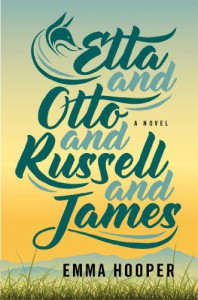
This is one of those books, I think, that people are either going to either love or hate. It is written in a unique, lyrical prose that sometimes feels more like a poem than a novel. It is also going to be subject to the scrutiny of the ardent fans of The Unlikely Pilgrimage of Harold Fry because it will surely be compared to that book.
When I finished reading it, I went online to check out some other reviews, and to see if someone could explain a part I was confused by in a satisfying way. Instead, I found a lot of love and some hate (like I thought). I found that many people were annoyed by the grammar in the book (no quotation marks), which was funny to me, since I did not even notice this while I read. How weird, because I am typically a grammar fiend myself. You are probably guessing this opinion would put me firmly in the “lover” camp for this book.
Etta’s story, when it begins, feels very familiar if you took that journey with Harold Fry, and in many ways, they cover a lot of similar emotional ground. As for the setting, we are crossing Canada, though the terrain seems a bit tamer than I’ve been led to believe. In any case, Etta has set off on a journey that becomes surprisingly tense when we realize that perhaps she is not as equipped to make it as we originally thought. I did love this book. I loved the journey, and I loved the flashbacks to the war and the beginnings of their relationship. I loved the connections between Etta and Otto and Russell and James. I enjoyed my trip with Etta across Canada, and I wanted her to find what she was missing. I cared about her and each person she left behind, and I was happy to share in their intimate correspondence. It was a compelling story told with love and humor, and, just like Dorothy, it made me understand once more how sometimes you have to travel very far to appreciate what’s been right in front of you all along.




 6
6






